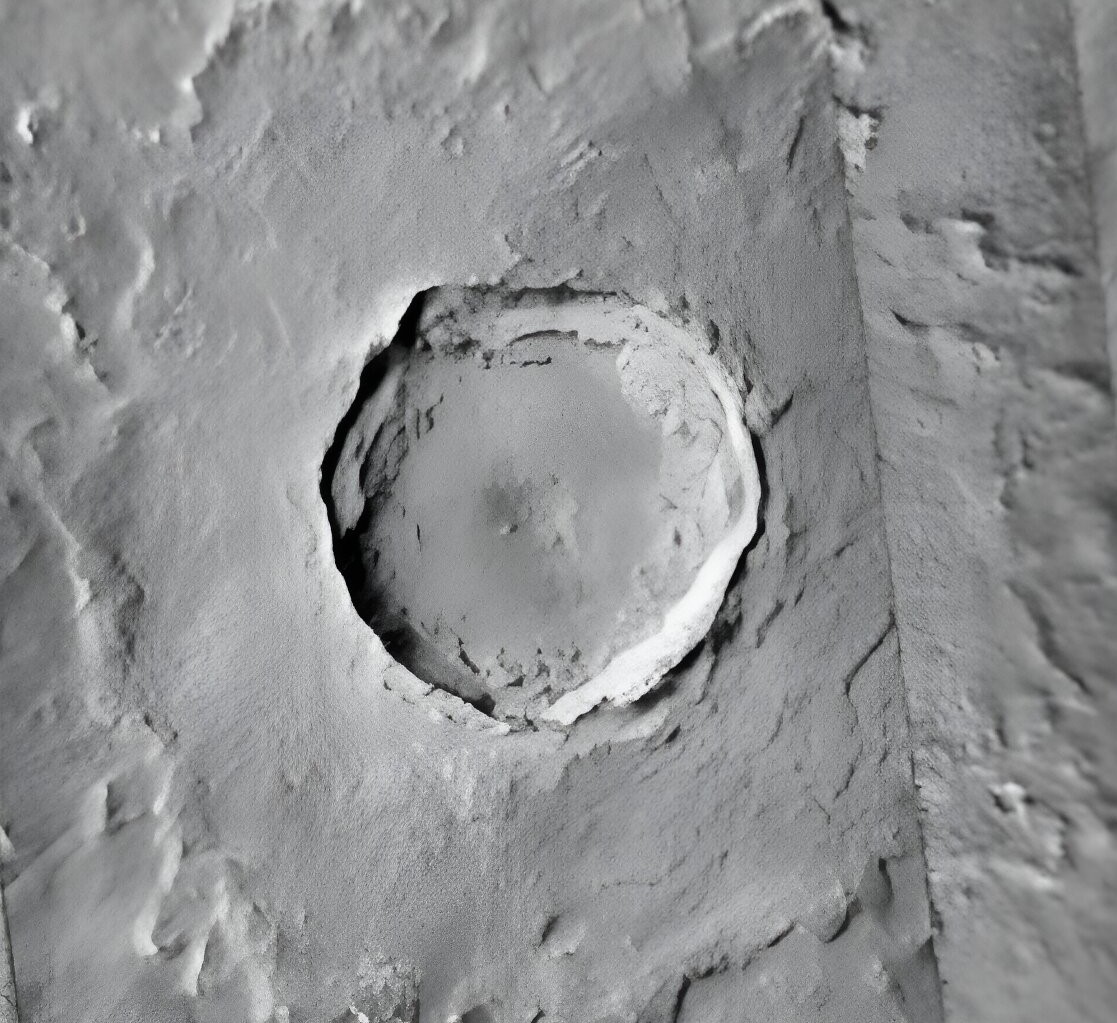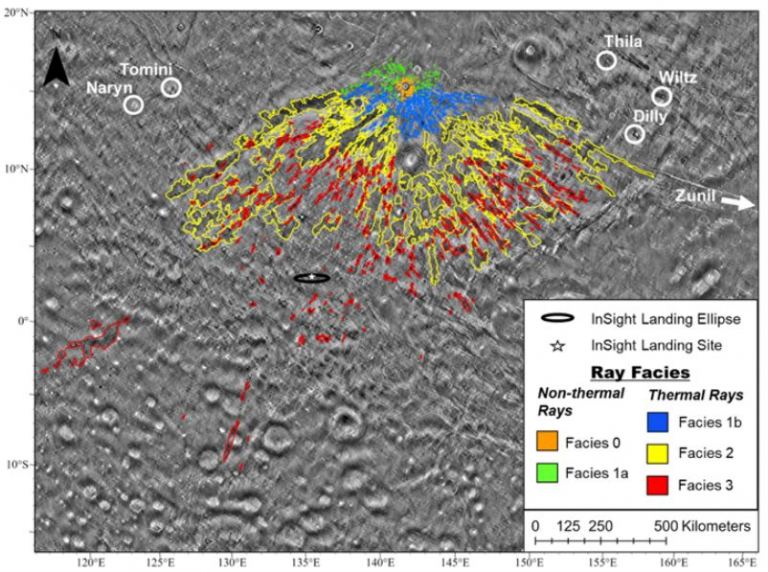Compared to Earth, Mars has a much bigger number of craters. This is due to the lack of weathering forces and weak plate tectonics of the Red Planet. But not all of them were formed as a result of collisions with asteroids. Some of the craters were formed as a result of falling debris that was lifted from the surface of the planet itself as a result of collisions with space objects.

Recent studies have shown that one large impact crater on Mars has led to the formation of more than two billion smaller craters within a radius of almost 2,000 km. This research was presented at the Lunar and Planetary Science Conference in Texas. The scientists examined the Corinto crater, located in Elysium Planitia, about 17° north of the equator. By geological standards, this is a relatively young crater — it is about 2.34 million years old. It has an extensive “ray system”, which indicates a large number of emissions from the impact site, which can be observed even today.
The crater has a diameter of about 14 km and a depth of 1 km. Its interior bowl is dotted with other, smaller craters formed as a result of the collision. According to the signs, it can be concluded that during the fall of the crater, it was filled with water ice, since after the impact, the process of degassing of superheated ice occurred. Calculations indicate a steep angle of impact, about 30-45° from a straight line.
Most of the collision field is located to the south, especially to the southwest of the crater. Despite the fact that some secondary craters are located to the north of the main crater, it is obvious that the angle of impact was large enough to push most of the material south.

The scientists used data from the MRO and analyzed the characteristics of smaller craters surrounding the main Corinto crater. In particular, they looked for craters that looked like eruptions rather than collisions. They classified them according to five different criteria based on the distance from the main crater.
Two main conclusions of the study. First, it is the formation of 2 billion secondary impact craters larger than 10 meters. Secondly, their location is at a distance of up to 2000 km. These craters draw attention to further studies of this interesting Martian crater.
Earlier, we reported on how an open giant volcano on Mars could be a haven for life.
According to sciencealert.com
Follow us on Twitter to get the most interesting space news in time
https://twitter.comne/ust_magazine


